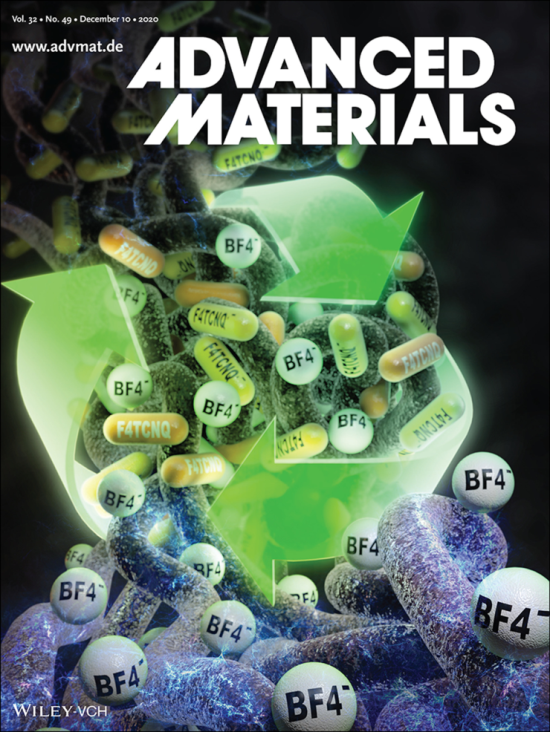- Ajou GSIS
- Academics
- Admissions
-
Student Life
Student Life
- Alumni
-
Notice
Notice
Notice
Ajou Univ. News
NEW Team of researchers from Ajou and Konkuk Universities develop sequential polymer doping technology
- 2021-01-26
- 6123

A team of researchers from Ajou and Konkuk Universities has created a new polymer doping strategy based on their discovery of dynamic and thermodynamic factors affecting polymer doping.
Prof. Kim Jong-hyun (Dept. of Applied Chemistry and Biological Engineering and Dept. of Molecular Science and Technology, pictured left) and Prof. Seo Hyung-tak (Dept. of Materials Science and Engineering, pictured right), both from Ajou, teamed up with Konkuk researchers led by Prof. Kim Bong-gi (Dept. of Organic and Nano System Engineering) to conduct the groundbreaking study, which has gone on to appear on the front cover of the December 10 issue of Advanced Materials (IF = 27.398). Professors Kim Jong-hyun, Seo Hyung-tak, and Kim Bong-gi participated as corresponding authors, and Yoon Sang-eun, currently in the combined postgraduate program in the Department of Molecular Science and Technology at Ajou University, was listed as the first author.
The title of the study is “Improvement of Electrical Conductivity in Conjugated Polymers through Cascade Doping with Small-Molecular Dopants.”
Active research on conjugated polymers for organic semiconductors has led to leaps in the performance of electric charge mobility, but researchers have struggled to achieve the desired high level of conductivity due to the difficulty of creating electric charges through doping that equally affects conductivity.
The efficiency of molecular doping is known to be proportional to the energy offset between the highest occupied molecular orbital (HOMO) of the electron-supplying conjugated polymer and the lowest unoccupied molecular orbital (LUMO) of the electron-receiving dopant. In their latest study, the Ajou and Konkuk researchers demonstrated that sequential use of dopants with different LUMOs increases doping efficiency, and were able to achieve the world’s highest level of conductivity for molecular doping—above 600 S/cm—with their strategy.
The team has also demonstrated that the low doping efficiency associated with the use of dopants with high energy offsets from conjugated polymers stems from thermodynamics. They discovered that doping efficiency can be dramatically increased when doping is first attempted using a molecular dopant with a low energy offset and superior doping dynamics, followed by the use of a second dopant with a high energy offset. The researchers confirmed that this cascade effect is attributed to the decrease in activation energy needed for molecular doping.
Prof. Kim Jong-hyun explained: “Our study provides in-depth insights into the energy orbitals of various molecular dopants, the dynamic and thermodynamic equilibria, and the conductivity of finally doped polymers, as well as an effective polymer doping strategy. Using this kind of strategy can significantly improve the conductivity of organic conductors that has hit an impasse as of late.”
The team expects that development of new materials alongside their cascade doping strategy can lead to the discovery of highly flexible and highly elastic organic conductors capable of replacing conventional metal and oxide-film inorganic conductors.

<Courtesy of WILEY VCH>
 아주대학교 국제대학원
아주대학교 국제대학원